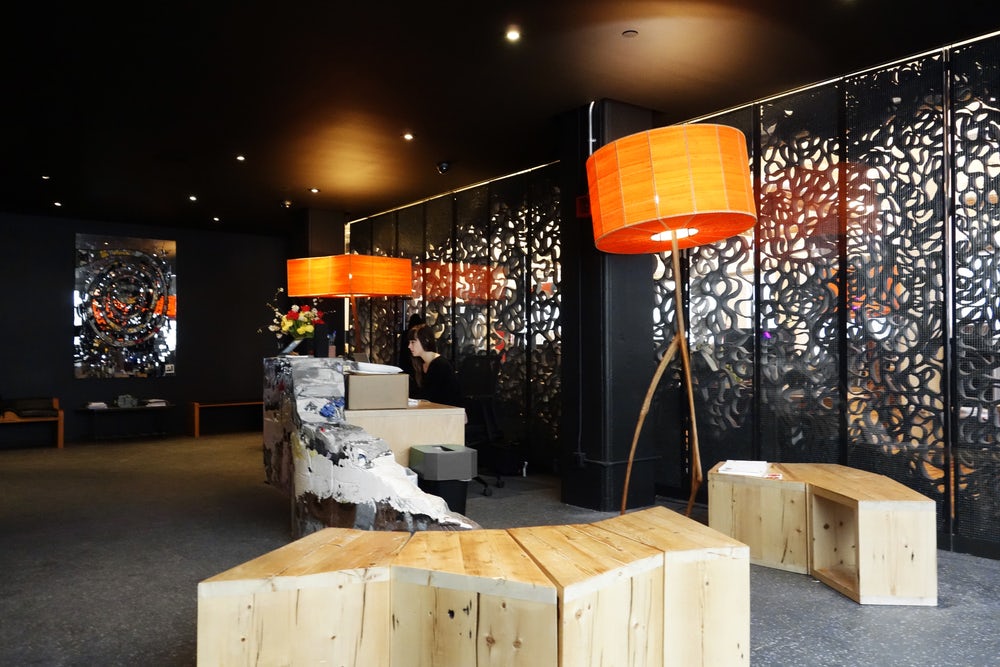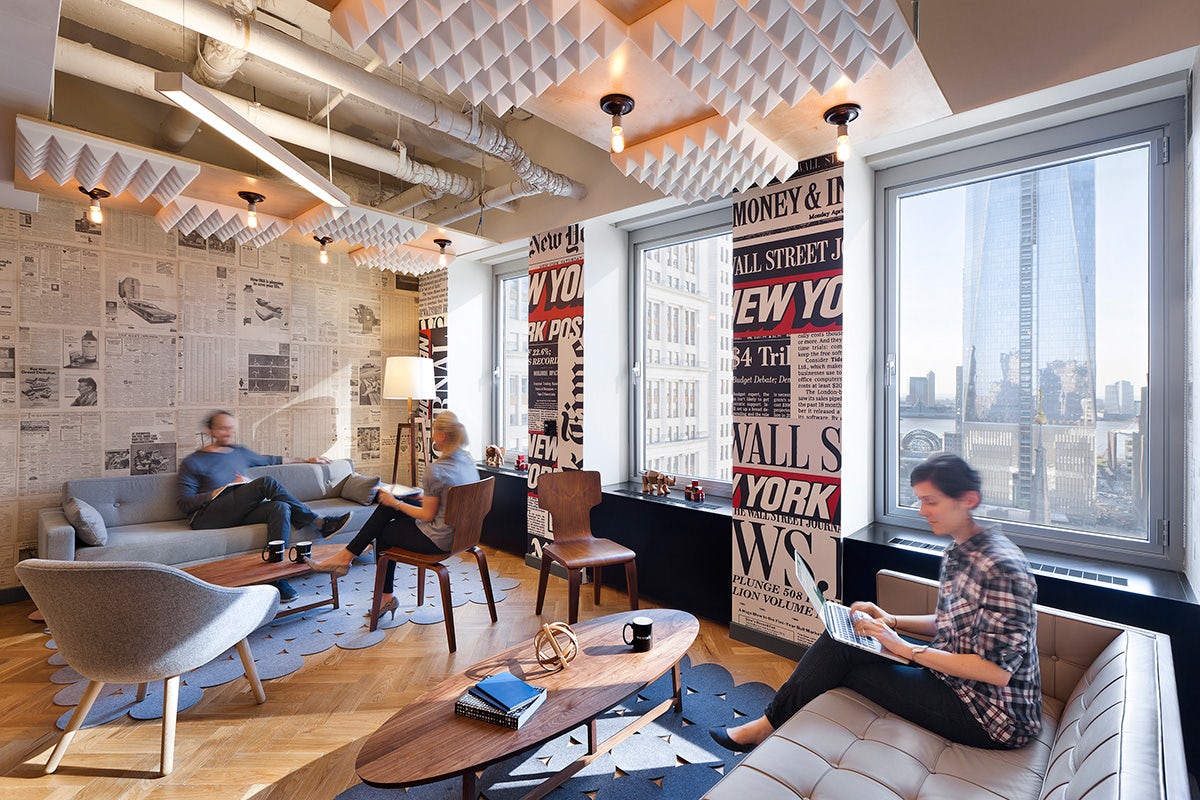Architizer is building tech tools to help power your practice: Click here to sign up now. Are you a manufacturer looking to connect with architects? Click here.
The “Sharing Economy” is a relatively new concept in today’s business markets in which consumers directly barter with goods and services through online community-based platforms. Companies such as Airbnb, Uber, WeWork, Yerdle, TaskRabbit and Kickstarter have built loyal communities which thrive at the intersections of convenience, social collectivism and digital immediacy. Challenging the status quo, these businesses are built to adapt to constant change and in many ways are not simply selling “someTHING,” but “someHOW.”
As millions of users participate in this emerging realm of commerce, there is also great innovation in how these companies have changed the “office” typology. The Sharing Economy is driven by a workforce of startup-savvy creatives who value mobility, flexibility and group thought; an ethos that is reflected in the physical environments these young companies occupy. These spaces are built to reflect the ideals of a company’s product by functioning less as a productivity machine and more as a community for sharing ideas and inspiring its members.
These environments go beyond aesthetically pleasing design and serve as laboratories for business experimentation. Many of these companies realize that a person’s job defines most of their daily life and therefore invest in their workplace culture. Elements including communal kitchens, in-office lectures, integrated digital technology, or even something as simple as a comfortable chair are tools these companies utilize to get the most out of their workers.

© Ole Sondresen Architect

© Ole Sondresen Architect

© Ole Sondresen Architect
Kickstarter by Ole Sondresen Architects, Brooklyn, N.Y.
Architect Ole Sondresen renovated this landmark building with a deft understanding of the Kickstarter mission to foment the next wave of creative ideas. Located in the industrial neighborhood of Greenpoint in Brooklyn, the project includes a theater, library, gallery and meditative exterior spaces to supplement its office program.

© Jeremy Bittermann

© Jeremy Bittermann

© Jeremy Bittermann
Airbnb Portland Office by Aaron Taylor Harvey and Rachael Yu, Portland, Ore.
Though controversial among municipal governments, Airbnb has taken the spirit of the sharing economy and literally brought it home by creating a compelling product especially for nomadic millennials. Their offices in Portland appear almost as an agglomeration of each of their employees living rooms, mixing comfortable gathering spaces with niches for individualized work.

© Jasper

© Jasper

© Jasper
Uber by Studio O+A, San Francisco, Calif.
Uber’s office in San Francisco is built on transparency and clarity to mimic the company’s app which hails a ride telling you who’s driving, duration of the ride and cost all before you get in the car. The office incorporates interlocking “comfort zones” for flexibility of use and digital displays throughout allowing any employee to connect with the daily operations of the company.

© SHoP Architects
Uber Headquartersby SHoP Architects, San Francisco, Calif.
SHoP with Studio O+A is currently in design development for Uber’s freestanding headquarters in the Mission Bay neighborhood of San Francisco.

© Ole Sondresen Architect

© Ole Sondresen Architect

Etsy Inc by Ole Sondresen Architects, Brooklyn, N.Y.
Through Etsy’s online marketplace, product-generating small businesses can grow their customer base without having to invest in marketing or web development. Its wabi-sabi-centric community is captured in its Brooklyn headquarters with an interior green wall along the entry and sculptural felt partition behind the reception desk.

© Christopher Stark Photography

© Christopher Stark Photography

© Alexander Jermyn Architecture
WeWork Berkeley by Alexander Jermyn Architecture, Berkeley, Calif.
The CEO of WeWork Adam Neumann describes the “WE” generation which he defines as people interested in collective development and sharing resources. This business model refers to not just space but also technology, expertise and even business strategy. These spaces lower the investment capital one must have to start a business allowing for more growth for young entrepreneurs.

© Stantec

© Stantec

© Stantec
WeWork by VOA Associates, Inc., New York, N.Y.
There are over 50 WeWork locations globally and each is tailored to its locale to best serve its users.
Architizer is building tech tools to help power your practice: Click here to sign up now. Are you a manufacturer looking to connect with architects? Click here.




